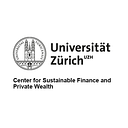My 3.1 tons of CO2 emissions to attend a sustainability conference — The paradox of working towards sustainability
By Erin Duddy
Every year, hundreds of investors, social entrepreneurs, and sustainable finance practitioners fly to SOCAP, a conference where participants discuss and develop solutions to global challenges. The positive impact of the new partnerships, innovations, and initiatives established at the conference is incalculable. However, what one can calculate are the emissions from the hundreds of flights to California and back. When it comes to working for sustainability, do ends simply justify the means?
The Kincade wildfire rages below me in the water-starved state of California as my plane takes off from San Francisco. I’m leaving SOCAP and my home state feeling inspired and motivated — yet slightly conflicted. The conference opened doors for new impact-focused projects and sped the progress of existing ones dramatically. But the irony of flying 10,000 kilometers to confer about sustainability solutions is made real as my friends and family face another season of natural disasters.
A week after my return, I watched from afar as the Easy Fire broke out a mere five kilometers away from my childhood home. As I followed the events, I became increasingly unsure whether ends justify the means — in this case, the extra 3.1 tons of carbon emissions contributed to the atmosphere.
Beyond solving problems
International conferences are fundamental for advancing the sustainability movement, but they come at a cost. The dilemma is nothing new and all but a SOCAP-bound question. It exists for all international conventions, like the COP21 conference, where the Paris Agreement was negotiated. Assembling, running and dismantling the conference site was estimated to have produced 21,000 tons of CO2 emissions alone. On the other hand, the conference succeeded in drafting an unprecedentedly ambitious climate agreement signed by 194 states.
Sustainability challenges are essentially systemic issues. Systems can tolerate a certain amount of change and still remain intact. Beyond this tolerance, systems start to break down. We know that the challenges associated with sustainability risk our social, environmental, and economic systems. Work done to solve these issues is work done to prevent a systemic breakdown.
Despite the systemic nature of the issues at hand, human beings tend to favor a linear way of thinking and acting. This means narrowing problems to tasks that we can solve with ease. Linear thinking is efficient and straightforward. On an individual level, it could be like:
Problem: I’m hungry.
Solution: Big Mac.
Problem solved. However, the price of this immediate solution is the impact it has on broader systems. In this case, these systems include health, animal welfare, emissions, and waste management.
If we bring this back to larger systems, using linear thinking to find sustainability solutions often ignores negative impacts. I heard several people promote flying commuter vehicles at SOCAP as a solution to high rents and long commutes for residents living outside of San Francisco. If less time was spent in traffic, more time could be spared for work and family. Plus, flying cars. What is there not to like!
On the other hand, a solution like this could potentially lead to a higher concentration of jobs in already overpopulated areas. Gentrification, skyrocketing rents, and the overuse of existing infrastructure could potentially follow. How long would it take for ensuing challenges to outweigh the solution?
Sustainability challenges require solutions guided by systems-thinking or thinking that takes the impacts on complex systems into consideration. As we work to find solutions to the urgent challenges posed by climate change, we have to continue to push towards decision-making that sees the full spectrum of the impacts caused by our solutions.
Making my 3.1 tons count
Despite the paradox, the undeniable value of gathering together is the concentration of solution-oriented thinkers and the connections and collaborative breakthroughs the event enables. The act of coming together directly feeds into holistic solutions — not only through trial and error, but by collaborating in-person.
As I left the community of change agents and my beloved home state, the raging wildfires pushed California into yet another state of emergency. The professional progress made in the very context made one point very clear: we need to make the time spent, connections made, and CO2 produced count.
In our case, SOCAP provided the CSP team the opportunity to deepen existing collaborations with partner networks, introduce new investors to the impact space, and bring people together to share the skills and knowledge we have to answer the big questions we are working to solve. As a direct consequence, we are making rapid progress with the newly launched Coalition for Impact* ─ a joint task-force of networks working together to maximize impact and outreach.
An example of the concrete steps we are taking at CSP to provide solutions to the burning issue of climate change was released two weeks ago as part of the Sustainable Investing Capabilities of Private Banks report. The report features a section on the alignment of private banks with international environmental agreements and the impact of the EU Action Plan on Financing Sustainable Growth. Needless to say, there is much the banking sector can and needs to do take a proactive stance on both topics. But if the big players take sustainability with the needed seriousness, the billions managed by these players could be mobilized in ways that would mitigate the causes of the climate crisis.
This is one example of how we are accelerating the flow of private wealth into sustainability — and making ends justify the means.
Research Assistant
Impactdatabase.eu Project Manager
Organizations involved include in C4i
CSP — Center for Sustainable Finance and Private Wealth
BMW Foundation Herbert Quandt
Toniic
Nexus
Katapult
Pictures by Matthew LeJune and Damien Checoury
Icons by Creative Stall
